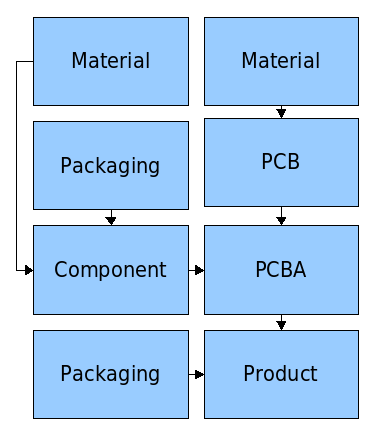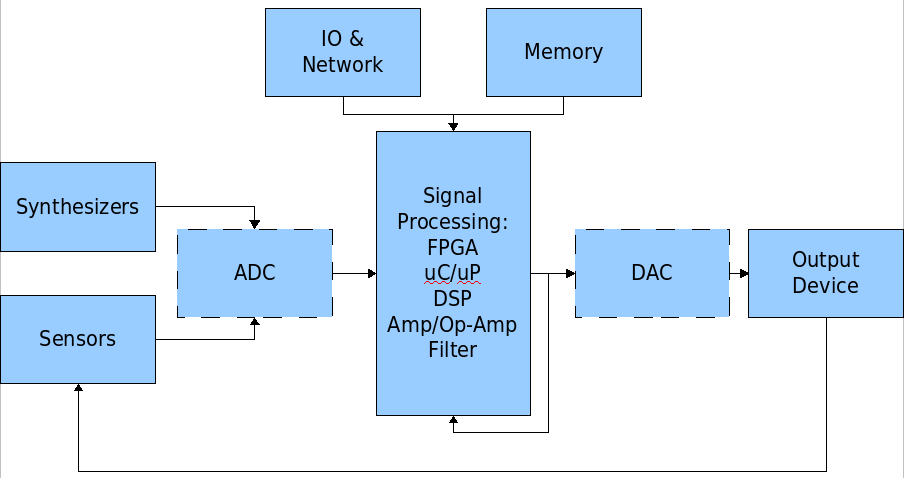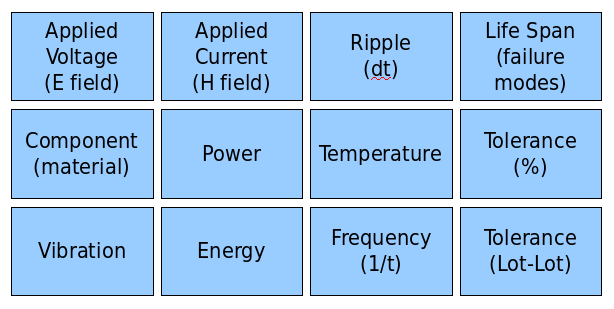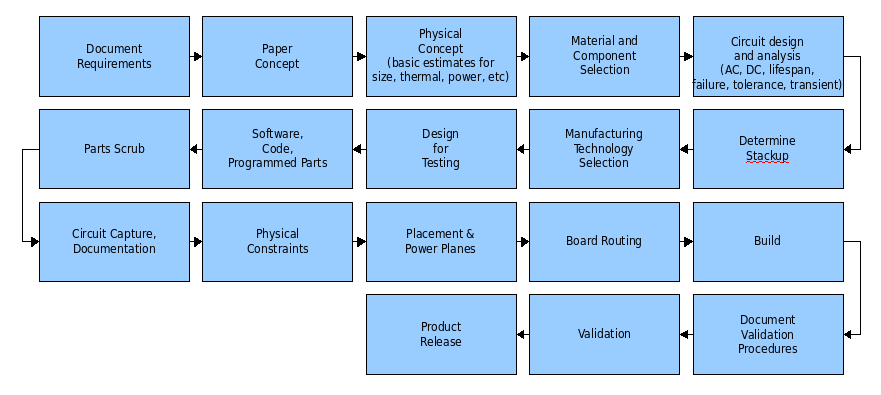Main menu
You are here
Circuit Design, From the Big to the Little (Revisited)
This is an update of an article I wrote almost two years ago. There are a few things I've wanted to change and so I'm taking the time now to expand the original. I hope this will be of some use to budding engineers and college students who are trying to wrap their head around the big picture. This is how I understand what an engineer does, but not necessarily how other engineers see things.
First, from raw materials to finished product: how do we get there? Generally raw materials are assembled into components and PCBs. Components are attached to PCBs and then assembled into the product enclosure.

There are thousands of circuit types, but convention breaks them down into analog and digital. Digital is anything that takes place in the digital domain. Technically all circuits are analog, but they are considered digital if they deal in discrete quantities (bits). Analog circuits on the other hand are considered to be input devices, output devices, filters, amplifiers, oscillators and the like.

Generally speaking, however, all circuits consist of a source, a distribution network and a load.

So how does one go about designing circuits? For starters you will need a large set of tools and resources available. They range from the things you learn in school (e.g. math, physics, circuit analysis) to more practical things (e.g. datasheets, circuit testing, acquired knowledge). The degree to which one knows these skills and the degree to which one knows the particulars of what he/she is implementating will determine how well a circuit performs and good an engineer is.

To have the skills is insufficient. One must understand the subject intimately. This set of principles is one I try to consider when designing my circuit. Each application is different (whether it's a video amplifier, temperature sensor, microprocessor, or LCD display), but the principles are always the same. It's important to understand how they affect the circuit and how they affect performance. In short, it's really important to look at the magnitude of things and the time frame they occur in.

While circuit design is at the center of the product, it is really just a small part of the entire development process.

- Log in to post comments
